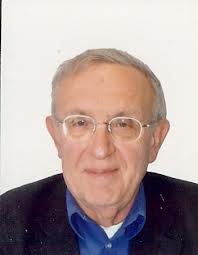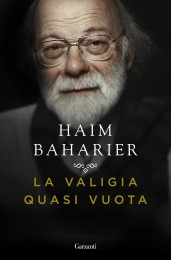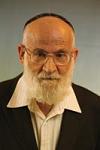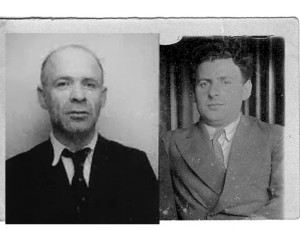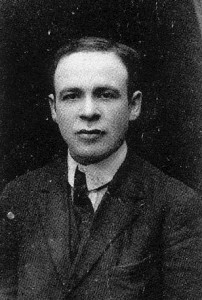 Un très bon article de Sandra Ores pour la MENA sur notre film sur Monsieur Chouchani.
Un très bon article de Sandra Ores pour la MENA sur notre film sur Monsieur Chouchani.
Sur les traces de Chouchani (info # 012112/13) [Culture]
Par Sandra Ores © Metula News Agency (www.menapress.org)
Jacob lutta jusqu’à l’aube avec l’homme. Celui-ci, voyant qu’il ne pouvait le vaincre, le blessa à la hanche. L’homme demanda à Jacob son nom, puis le renomma Israël. Jacob lui retourna la question à son tour, mais l’homme répondit “pourquoi demandes-tu mon nom ?”, et ne lui donna point de réponse.
Comme l’homme avec lequel s’est battu Jacob dans le récit biblique, le personnage énigmatique de Chouchani, érudit du XXème siècle, qui fut le maître inégalé de grands penseurs de notre temps, ne révéla jamais son identité.
L’homme qui apparut puis disparut auprès de Jacob fut rebaptisé “l’ange” par les commentateurs rabbiniques décelant dans sa manifestation une présence transcendantale ; de la même manière, les disciples de Chouchani ont perçu dans ce génie du Talmud, de la philosophie, des mathématiques, et maître dans bien d’autres domaines encore, une dimension surnaturelle.
Chouchani n’était d’ailleurs pas son véritable nom. Ce pseudonyme découle du mot hébreu chouchan, qui signifie fleur de lys ; la fleur, pressée sur la face de la pièce d’un shekel, représente un symbole ancien d’Israël.
Caméra à l’épaule, le réalisateur franco-israélien Michael Grynszpan s’atèle à reconstituer le puzzle Chouchani, lequel avait le plus souvent l’allure d’un clochard. Mais Emmanuel Levinas, Elie Wiesel, Jacques Abramoff et d’autres éminents professeurs ont couvert d’éloges les plus respectueuses son intelligence et son savoir.
“Ce maître prestigieux et impitoyable en exégèse et en Talmud” (le Talmud, la Torah orale), tel que le décrivait Levinas, qui a certainement beaucoup appris de lui en matière d’éthique – l’un des principaux domaines d’intérêt et de recherche du philosophe français.
S’il récitait le Talmud, le Zohar1 ou le Guide des Egarés2 de Maïmonide par cœur, Chouchani en faisait de même avec le Coran ou les Vedas3. Il possédait une mémoire ainsi qu’un esprit de synthèse exceptionnels. “Il savait tout”, commenta Wiesel dans un article du quotidien israélien Yediot Aharonot en 1964 ; Wiesel, qui fut son élève pendant trois ans à Paris, et qui considère Chouchani comme l’un de ses plus influents professeurs, écrivit également à son sujet qu’ “il avait lu tous les livres, pénétré tous les secrets, traversé tous les pays”.
chouchani.jpg
L’une des rares photographies de Chouchani
Depuis presqu’une année qu’il planche sur son sujet, Michaël Grynszpan, totalement absorbé, parle sans arrêt de Chouchani. Ce n’est pas la première fois que le réalisateur se penche sur un thème au demeurant abstrus ; en 2011, son film “Descendants de nazis : l’héritage infernal”, montrait des descendants de nazis vivant en Israël, certains s’étant convertis au judaïsme ; son documentaire “Les oubliés de l’histoire” (2005), consacre quant à lui la mémoire des Juifs originaires du Moyen-Orient, réfugiés en Israël suite aux violences dont ils furent victimes lors des mouvements nationalistes arabes du milieu du XXème siècle.
Grynszpan se passionne désormais pour ce héros encore flou dont il approche pas à pas le mystère ; à force de recherches et de rencontres avec ceux qui ont croisé le chemin de Chouchani, il recoupe les bribes d’informations dans le but de toucher du doigt la clé de voute de la logique et de la magie du personnage. Sentir la réalité de ce passeur de sciences nomade s’apparente pourtant à tenter de regarder à travers une vitre opaque.
Car en dépit de sa grandeur et de l’influence qu’il a eue sur des hommes ayant plus tard réalisé une brillante carrière, Chouchani est resté dans l’ombre. C’est que, pour lui, maintenir le secret sur sa propre vie relevait de l’obsession.
A en croire Elie Wiesel, Chouchani parlait une trentaine de langues anciennes et modernes ; mais nul ne connaissait son origine. “Son français était pur, son anglais parfait et son yiddish se pliait aux accents de son interlocuteur”, écrivit Elie Wiesel. Des récits concourent cependant à établir qu’il aurait survécu à la Shoah.
Personne ne lui connaissait non plus ni âge, ni adresse, ni métier, ni famille, ni amour ; “il lui manquait toutes ces caractéristiques qui définissent habituellement un homme en tant qu’élément d’un groupe”, renchérit le Prix Nobel de la paix 1986, qui explique en outre que, sans laisser de trace, il apparaissait et disparaissait à divers endroits du globe, qu’il était chez lui partout et nulle part.
Chouchani n’a laissé aucun écrit ; il a transmis toute sa science par oral à ceux qui ont eu la chance de recevoir ses enseignements – ou la folie de se laisser prendre au jeu de son intelligence aux limites impalpables.
Mais si quarante-cinq ans après la mort de cet homme mystérieux, peu de ceux qui l’ont rencontré ont effectivement dévoilé des indices, c’est aussi parce que, parmi ces hommes et ces femmes, certains craignent d’en parler ; car révéler ses secrets équivaut, en quelque sorte, à transgresser son vœu d’anonymat. Des témoins, dont des individus des plus sérieux et pragmatiques, ont refusé de se confier au réalisateur, craignant probablement que la mémoire de l’homme ne vienne les hanter. Rien d’étonnant à ce que Grynszpan se réveille parfois la nuit, imaginant Chouchani incriminant son travail.
Le professeur d’histoire émérite de l’université israélienne Bar-Ilan, Tsvi Bachrach, subjugué par sa rencontre avec le vagabond prodige, au début des années 50 dans le jeune Etat hébreu, refusa tout d’abord de rencontrer le réalisateur, prétextant “qu’il y avait quelque chose d’effrayant dans cette histoire”.
Shalom Rosenberg, éminent intellectuel israélien, professeur de philosophie juive à l’Université Hébraïque de Jérusalem, suivit lui aussi les enseignements de Chouchani. Lors de l’entretien qu’il concéda à Michael Grynszpan, l’enregistrement du son se brouilla soudain ; “c’est du pur Chouchani !”, marmonna-t-il en souriant. Rosenberg confia au cinéaste que, s’il avait eu un jour Chouchani en face de lui, il aurait alors compris la raison de sa plaisanterie.
Grâce à l’image, Grynszpan parvient à capter les regards mêlés d’effroi, d’envoûtement et d’admiration de ses interlocuteurs, ces éclairs qui dépeignent avec le plus d’authenticité le souffle de Chouchani. “Ce n’était pas humain”, confia Zvi Bachrach. L’un des maîtres à penser des Juifs de France après la guerre, le rabbin Léon Ashkénazi, autrement connu sous le totem de Manitou, se demandait quant à lui “s’il était un homme ou autre chose”.
Afin de rassembler les témoignages, d’Europe, des Amériques, d’Afrique du Nord, d’Asie et des divers pays du monde dont Chouchani a foulé le sol, Michael Grynszpan a créé un site Internet appelant ceux qui ont croisé sa route à s’exprimer. Il reste encore six mois d’enquête et c’est en Uruguay, notamment à Montevideo, où le génie fou s’est éteint, que l’équipe de tournage se rendra prochainement.
Mais plus que d’entendre des opinions au sujet du personnage invraisemblable, ce que cherche avant tout Grynszpan, c’est saisir l’essence et l’architecture de sa pensée, percer la source de ses enseignements, dévoiler les motivations enceintes dans ses pérégrinations. Avait-il compris le sens des innombrables choses de ce monde qui nous échappent ? Etait-il parvenu à entendre le Om sacré (la syllabe sanskrite figurant la perfection, l’unité du monde) ?
Wiesel écrivit, dans son livre Le Chant des morts (ed. du Seuil, 1966), que son mentor “aimait déplacer les points fixes”. L’une de ses particularités consistait à faire jouer les correspondances à partir des éléments d’un texte avec des repères situés dans des domaines complètement distincts ; il plaçait les problématiques dans des contextes infiniment plus larges et inattendus, s’inspirant notamment du Talmud, qu’il percevait comme une source inépuisable et originale de philosophie et d’éthique. Le penseur remettait tout en question, construisait et démolissait ses théories du même coup. Etre son élève devait être épuisant.
Chouchani fut assurément un personnage contradictoire sous tous ses aspects. Il vécut dans la plus grande simplicité, voire en dessous des limites de la décence, hirsute, mangeant salement, dormant sur des bancs, toujours coiffé du même chapeau, mais n’était pas pauvre pour autant ; il aurait gagné beaucoup d’argent en jouant à l’homme d’affaires. Encore aujourd’hui, sa fortune profite à des familles pauvres d’Israël.
Claude Riveline, ingénieur polytechnicien, professeur à l’Ecole des Mines à Paris, auteur de nombreux écrits sur la gestion des organisations et l’influence des “tribus, des rites et des mythes”, rencontra Chouchani pendant moins d’une heure en 1962. Il raconte avoir eu une sensation qui lui était jusque-là inconnue ; celle de se laisser pénétrer complètement par les mots de son interlocuteur, d’en comprendre aussitôt tout le sens. Riveline compare cette situation à la révélation de la Torah sur le mont Sinaï, lorsque, selon le récit, les 600 000 âmes présentes auraient entendu la parole du Dieu d’Israël.
L’ingénieur instille ainsi que Chouchani était doté de la capacité exceptionnelle de connaître et de saisir l’âme des hommes ; de s’y adresser et de s’en faire comprendre parfaitement, en nuançant son discours selon l’âge, le niveau de connaissance, les capacités émotionnelles et intellectuelles de celui ou celle qu’il avait en face de lui. Chouchani avait aussi la vocation de transmettre sa science aux esprits avides de savoir. Dans pas longtemps, Michael Grynszpan sera certainement capable de nous en apprendre un peu plus sur ce personnage mythique et sur sa dialectique.
Notes :
1Zohar : l’un des ouvrages principaux de la Kabale, exégèse ésotérique de la Torah.
2Le Guide des Egarés de Moïse Maïmonide est l’œuvre majeure de ce philosophe juif, considéré comme le plus marquant du Moyen-Age, qui était également rabbin et médecin dans l’Andalousie musulmane du XIIème siècle. Cet ouvrage, dans le quel l’auteur examine entre autres la relation entre la philosophie et la religion, a influencé les philosophes juifs et non juifs des siècles suivants.
3Vedas, ou connaissances en sanskrit : ensemble de textes qui auraient été révélés aux sages indiens, et transmis oralement de brahmane à brahmane jusqu’à nos jours. Un brahmane, dans les sociétés hindouistes, est un membre de l’une des quatre castes regroupant les hommes de lettres et les érudits, et notamment les sacrificateurs et les prêtres.
Metula News
Agency ©
